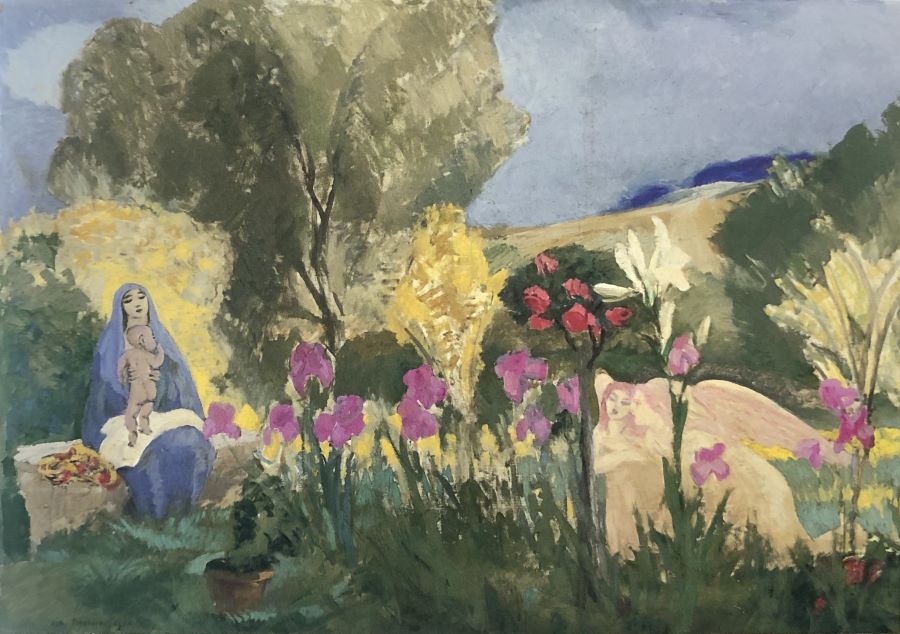大原美術館
You walk into the gallery. Please view at your own leisure. Touching the images, while not recommended in most galleries, will bring the image closer to you for better viewing (IN PROGRESS). Additionally, the owner of this house has left a strew of torn notes on most pieces that you are free to read.

"Cantique à la Vierge" Jules Flandrin, 1920
Oil on Canvas
Unfold Note
Quite enjoy the dusky, faded feeling that vaguely comes through the painting, despite the deep greens and the pops of color for the flowers. The artist, Jules Flandrin, is a fairly forgettable member of the Nabis group. I read a fairly scathing article that goes over why the author feels that he wasn’t able to make the cut compared to his peers. The article also goes over the teaching process Flandrin underwent as a student of Gustave Moreau, who I need to look more into at some point. The title is a reference to a 13th century poem which praises the Virgin Mary; ten years later Benjamin Britten would transform the poem into a choir composition. It’s interesting to think about what is getting lost and what is being gained from transforming a written work to a painting. Especially in this case where the transfer of information goes from Biblical text, to a medieval hymn, finally to a painting. The symbolism becomes increasingly condensed with each transformation. That application of symbolism to impressionist techniques was one of the major accomplishments of the Nabis group, and created a vital stepping stone into future art movements.

《耕到天》 藤島武二, 1938
Oil on Canvas
Unfold Note
The title of this one is translated to “Highly Cultivated Fields” which doesn’t seem to be ‘wrong’ per se but the original 耕到天 is more literally “Fields Attaining Heaven”. Both offer a faintly different lens to view it from. “Highly Cultivated Fields” brings the paintings a bit more towards a realist side, with a bit of a fun play between realism and a lack of naturalism. A nearly identical study held at the Menard Art Museum bears the same exact name but is translated to “Land Cultivated to the Top” which is a bit closer to the “Fields Attaining Heaven” in some ways but strikes me as very lousy. It’s quite a fun blend of a realist landscape, having allusions to labor without the need for a direct visual reminder of the working body, with very blobby, rough, impressionist shapes, and a little bit of that Japanese landscape perspective. Fujishima Takeji seems to be big on pulling from a lot of sources. He very specifically focused on Western paintings, which makes sense since he was born a year before the Meiji restoration began, specifically impressionism, history paintings, and art nouveau. That art nouveau influence is in a lot of his early work, especially his commercial work for poetry collection covers and the like, and really comes to a culmination in his 1904 work《蝶》(Butterfly), which definitely pulls a bit away from standard art nouveau but I’m a bit tired of writing now.
